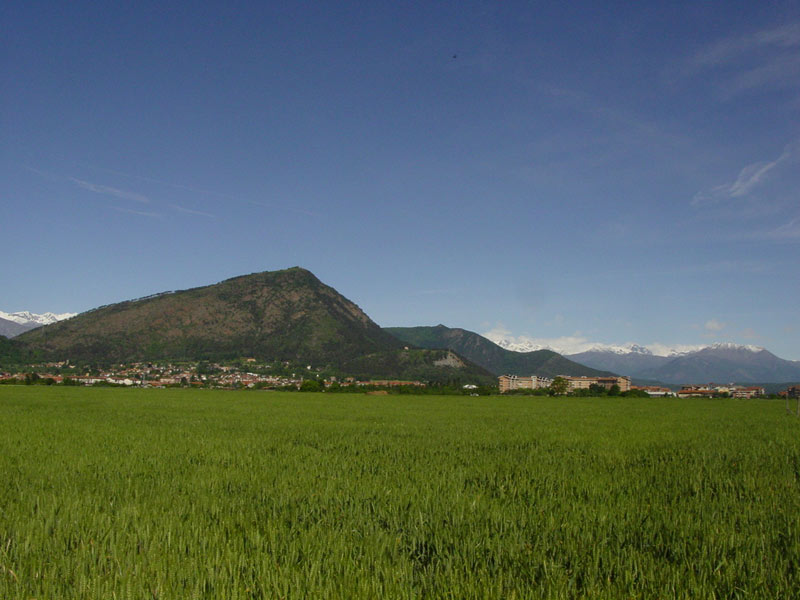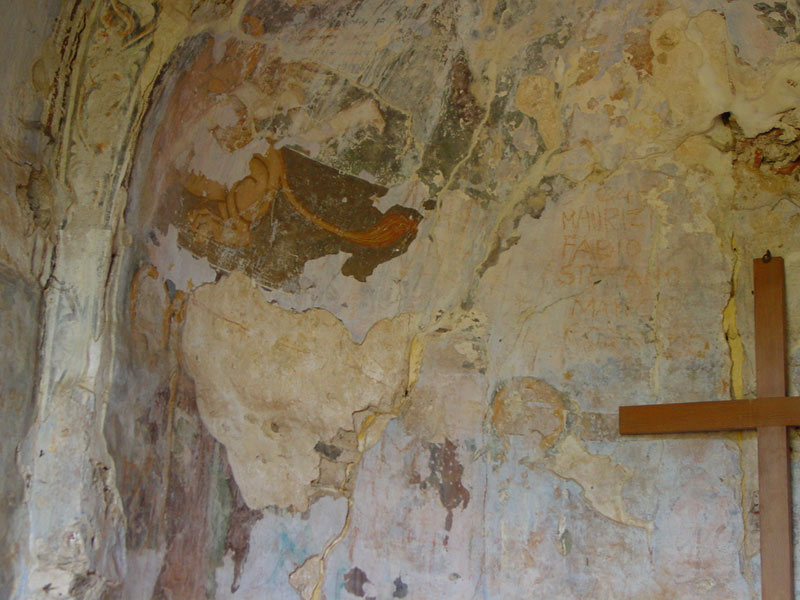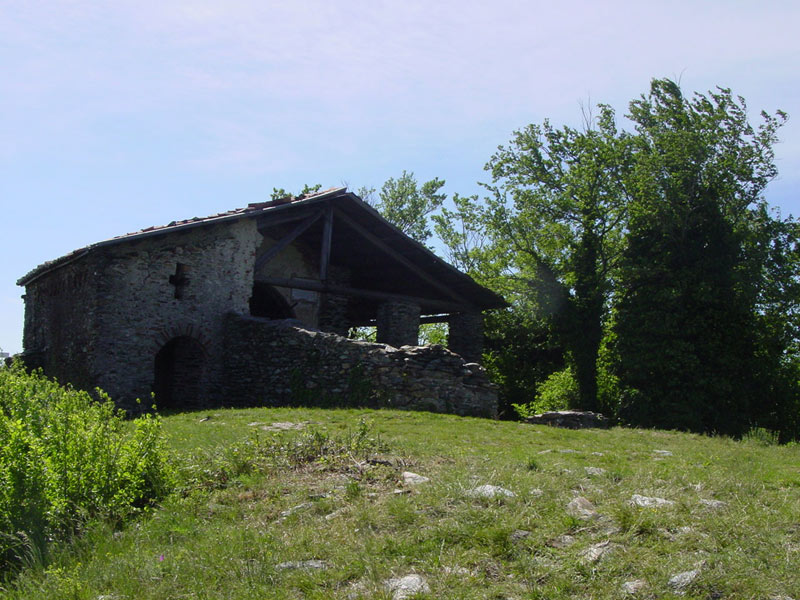Points of Interest
Historical - Architectural Heritage
In the Park territory there are several evidences of the human settlements characterizing the area since ancient times, at different altitudes. In particular, in the western section under the mountain summit, there are some finds consisting of:
- a block of rock on which there are 148 engraved cupels of various size and depth, partly linked by small canals;
- tombstone fragments, coins, and other archaeological finds found in San Giorgio Chapel and dating back to the Roman period;
- bricks (tiles, etc.) of the Roman and late Roman period found near San Vito Parish Church. The greenish squared blocks of chloritic gneiss scattered throughout the area of Rocca del Gran Merlone at the Nine Merlons Castle could also be of Roman origin.
Near the Park there are also important evidences of sacred architecture, like the Romanesque-style Chapel on the summit of Mt. San Giorgio and San Valeriano Chapel on the homonymous hill, as well as the three fortified structures not far from San Vito Parish Church, among which the Nine Merlons Castle, housing a restaurant. On the whole, in the past the fortified nuclei were five: this example of "vallum", in a high and very steep position, is still evident today and gives the slope and landscape of the Mountain a characteristic aspect.
Piossasco
Piossasco, a town at 20 km from Turin, is characterized by an important medieval history, as witnessed by its three castles, the ruins of the walls, and the village of San Vito with the homonymous church. Out of the three medieval castles, built between the 11th and 16th century, only the most recent one is perfectly preserved: it is called the Nine Merlons Castle (housing a restaurant), name which probably derives from a noble alliance born to defend the territory. Castellaccio or Gran Merlone, the most ancient castle situated in the highest position, and the other castle were bombed during the French advance in 1693. On the whole, the fortified area is still evident today and gives the slope and landscape of the Mountain a characteristic aspect. Besides the fortified structures, Piossasco boasts a great heritage of sacred architecture:
- Church on Mt. San Giorgio (in the Park)
At the top of the mountain: you can reach it with a pleasant walk on foot lasting about 2 hours. Inside, you can admire tombstone fragments, coins, and other archaeological finds dating back to the Roman period;
- S. Valeriano Chapel (in the Park)
It can be easily seen also from the distance.
- Confraternita Church
Here you can admire wonderful 15th century frescoes.
- S.Vito Parish Church
Of particular value the 1461 baptistry, the organ built by Bussetti brothers in 1842, and some paintings, probably by Beaumont. Nearby you can find bricks (tiles, etc.) dating back to the Roman and late Roman period.
- Santi Vito, Modesto e Crescenza Parish Church
It is the most ancient local church and, of the primitive Roman plan of the 11th century, it preserves the apse and the lower part of the belltower.
- S. Francesco Church
Second parish church of Piossasco, it was built by the Franciscans around the end of the 17th century.
- Madonna dell'Olmo Church
In it you can admire a fresco representing the Sacred Family: Madonna with the Infant Jesus, and Saint Joseph with a cane in bloom in his hand.
- Carmine Church
Built between the 17th-18th century, it is particularly important for the citizens of Piossasco for their devotion to the Virgin Mary of Mt. Carmelo, who became in the 18th century the patron saint of the town.
In the Park, near the summit of Mt. San Giorgio, there is a block of rock on which there are 148 engraved cupels of various size and depth, partly linked by small canals. The art in Piossasco is not only evident inside the Churches, but also on the hill of S. Valeriano where the artist Giuseppe Riccardo Lanza from Piossasco created a work of art which was completed and placed at the top of the mountain in 1972.








